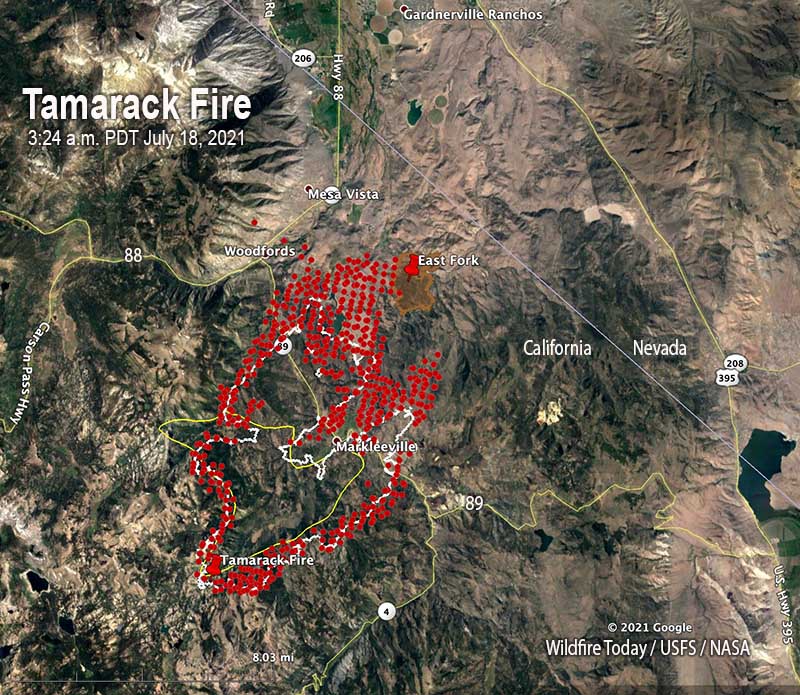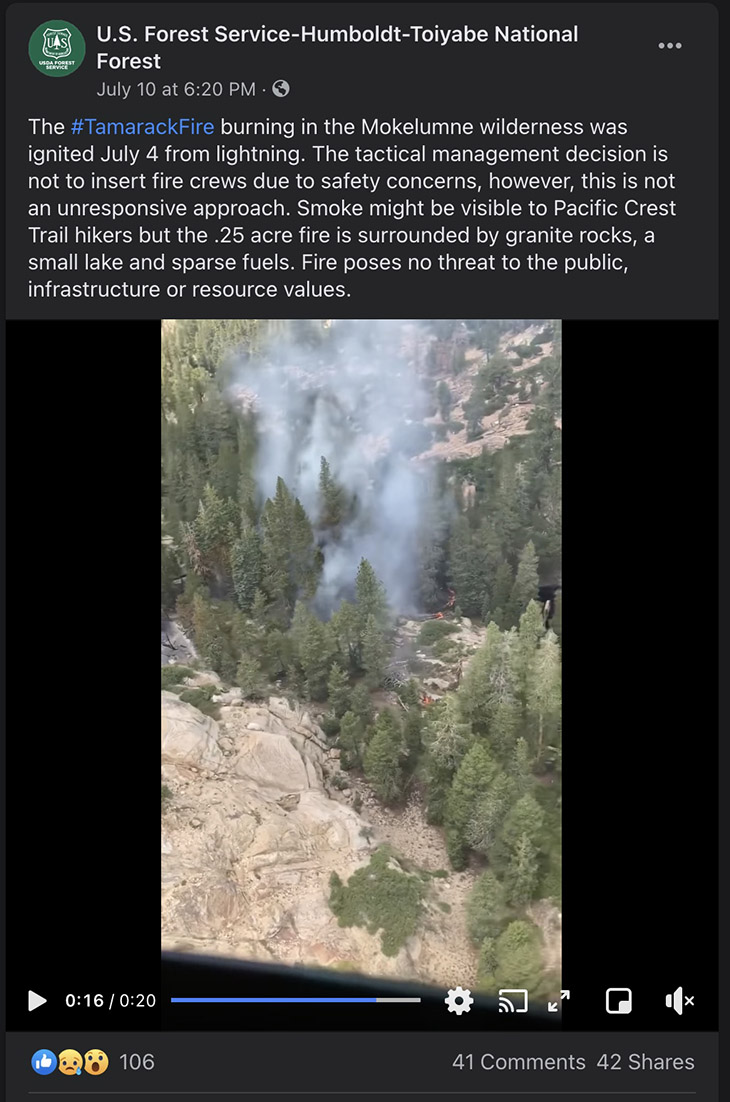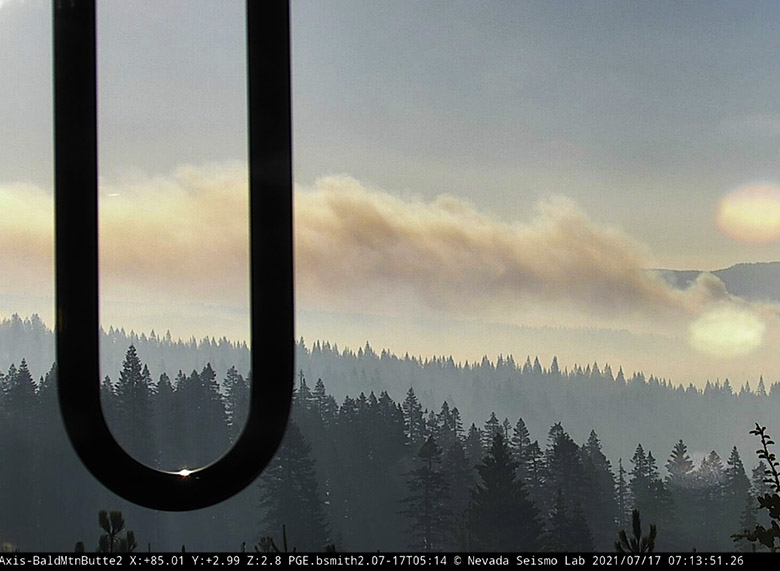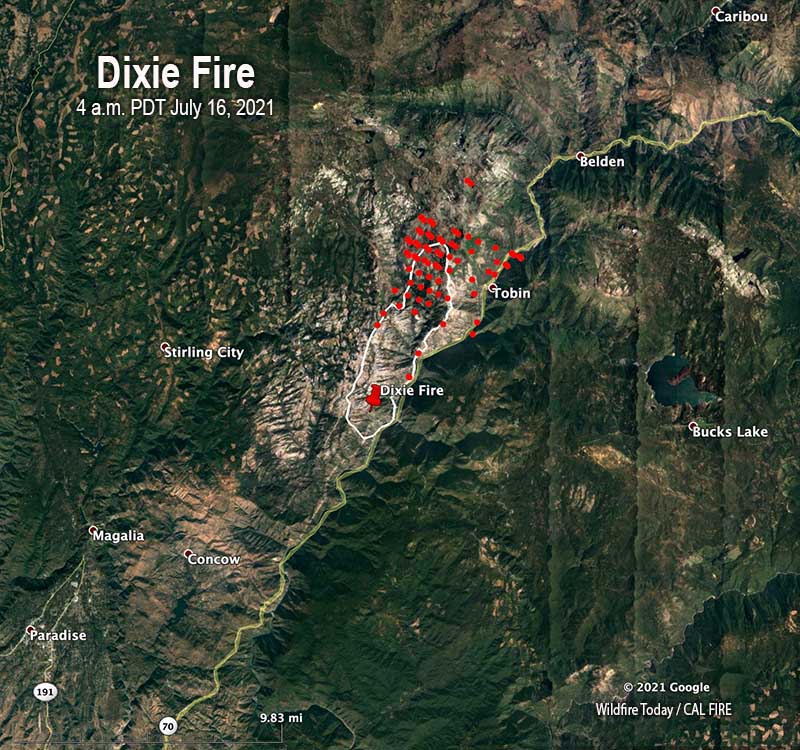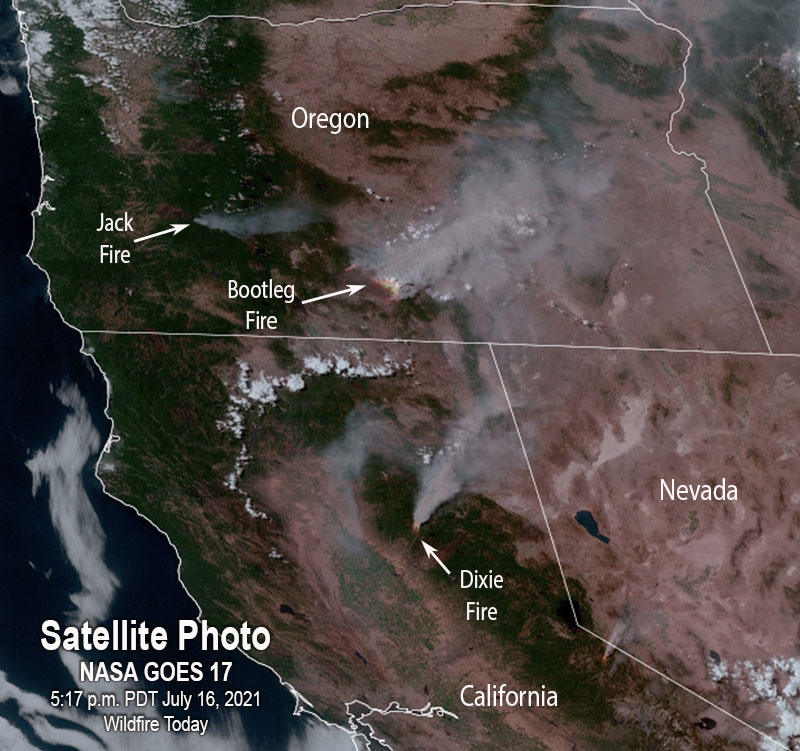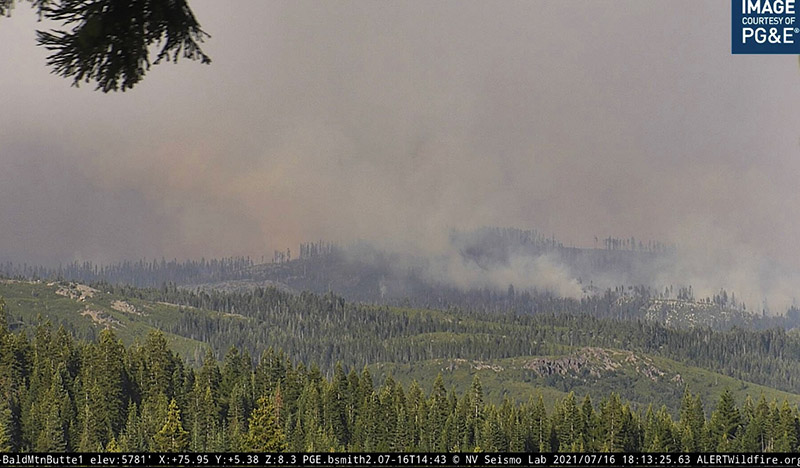12:42 p.m. PDT July 22, 2021

From the Incident Management Team, Thursday morning, July 22:
There was active fire behavior [Wednesday] afternoon with crowning, short crown runs and prolific spotting as the winds built up. Fuels remain extremely dry. The fire grew about 10,000 acres [Wednesday] to approximately 50,129 acres. It pushed to Hwy 395 and burned north and south along the highway but did not cross the highway. Active fire also pushed towards, but didn’t cross, Hwy 88 as firefighters were able to keep the fire south of the highway. Hwy 88 & 89 remain closed in the fire area to all traffic except incident personnel. A portion of Hwy 395 closed [Wednesday] for firefighter and public safety.
Over 800 people have been evacuated and over 500 structures are threatened. There are over 1,200 personnel working on the fire and more resources are on order. Firefighting operations continued throughout the night. Night operations include structure protection and firing operations when conditions are right.
The objective for managing the fire is full suppression, and all efforts will be directed towards meeting that objective with public and firefighter safety as the highest priority. Uncontrolled fire with extreme fire behavior continues to be a threat to surrounding communities, public, and firefighters.
Wednesday afternoon the fire was pushed by 15 to 25 mph winds gusting out of the west and southwest up to 33 mph while the relative humidity was in the low teens. The forecast for the east side of the fire Thursday afternoon calls for 82 degrees, 15 percent RH, and 15 mph winds gusting out of the southwest at 24 mph. This could put more pressure on the Highway 395 corridor.
To see all articles on Wildfire Today about the Tamarack Fire, including the most recent, click HERE.
On Friday, conditions will be similar but with winds maxing out at 7 mph from variable directions.
The National Situation Report for Thursday reduced the number of reported structures destroyed from 10 to 8.
Resources assigned to the fire Wednesday evening included 27 crews, 96 engines, and 9 helicopters for a total of 1,213 personnel.
7:33 a.m. PDT July 21, 2021

The Tamarack Fire spread further east on Tuesday, crossing the state line from California into Nevada (see map above). The fire started July 4 southwest of Markleeville, California and from that point has now spread 15 miles northeast and 10 miles to the north.
After it passed the state line near Leviathan Mine Road it continued east. During a satellite overflight at 3:18 a.m. PDT Wednesday July 21 it was about two miles west of US Highway 395 and 5 miles northwest of the junction of 395 and Highway 208.

The Incident Management Team reports that 10 structures have been destroyed.
Tuesday night voluntary evacuations were issued “for all residents in Leviathan Mine Rd. and Holbrook Junction areas.” More information is at InciWeb.
A mapping flight at 6 p.m. PDT Tuesday determined that the fire had burned about 41,800 acres, but it continued burning later into the evening.
Resources assigned to the fire Tuesday evening included 27 hand crews, 99 engines, and 9 helicopters for a total of 1,219 personnel.













